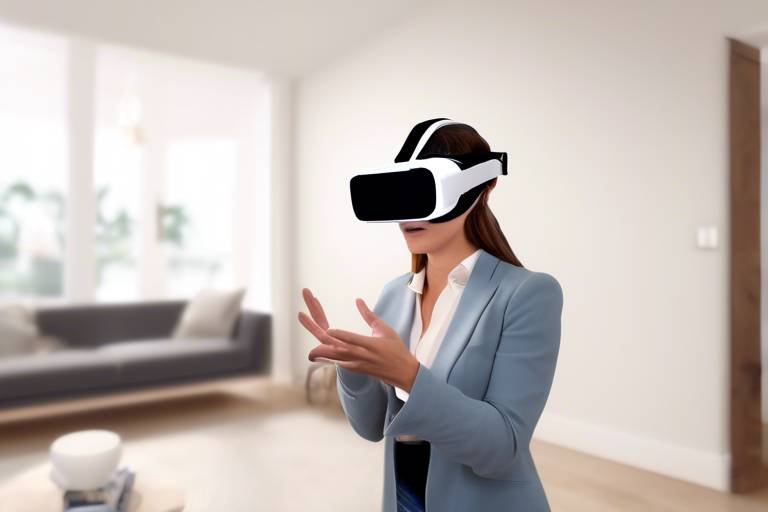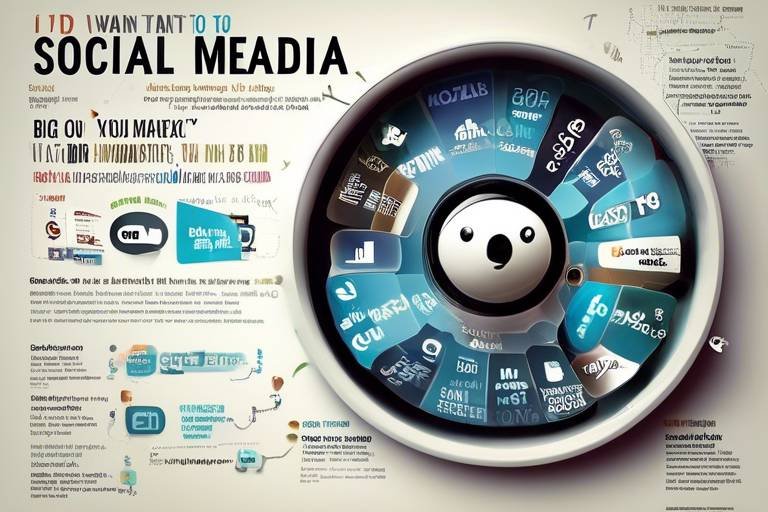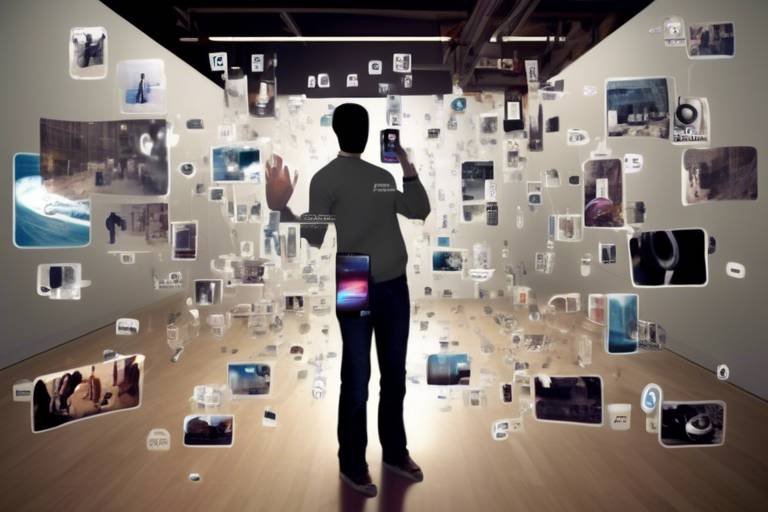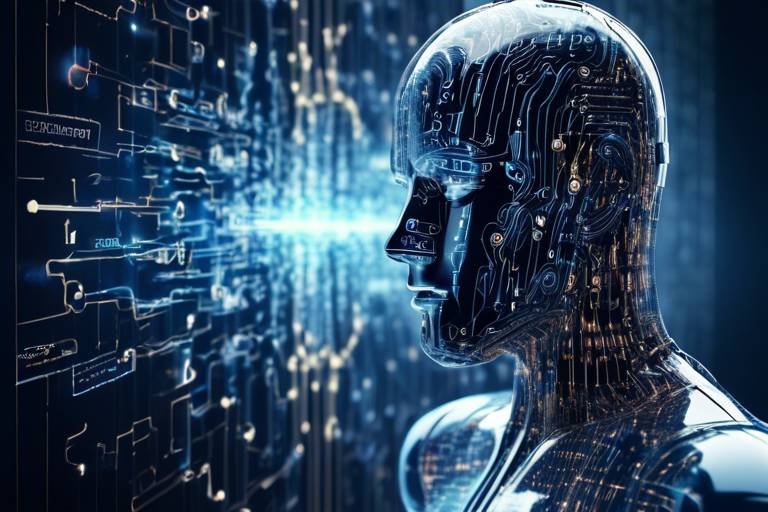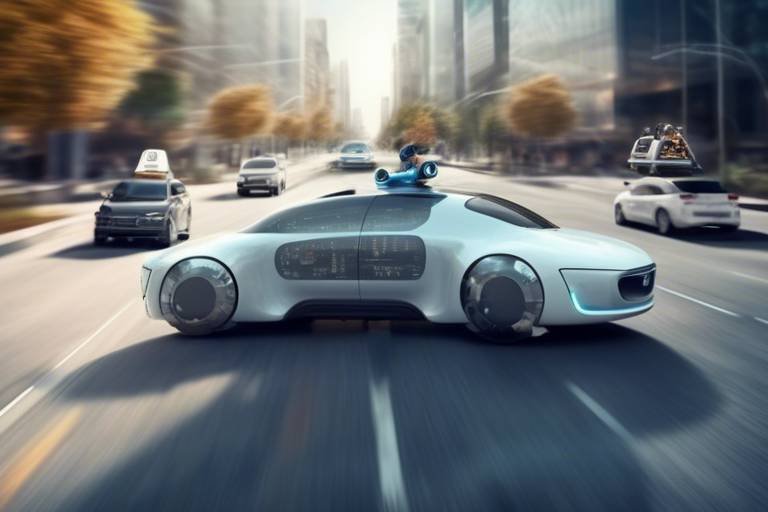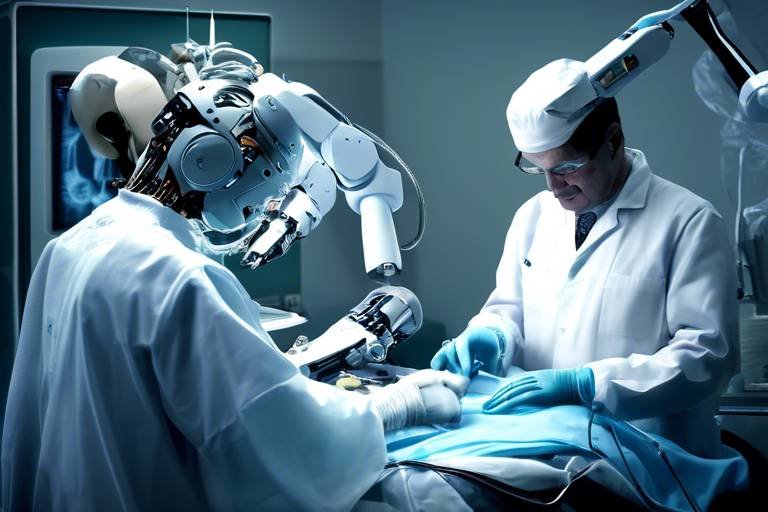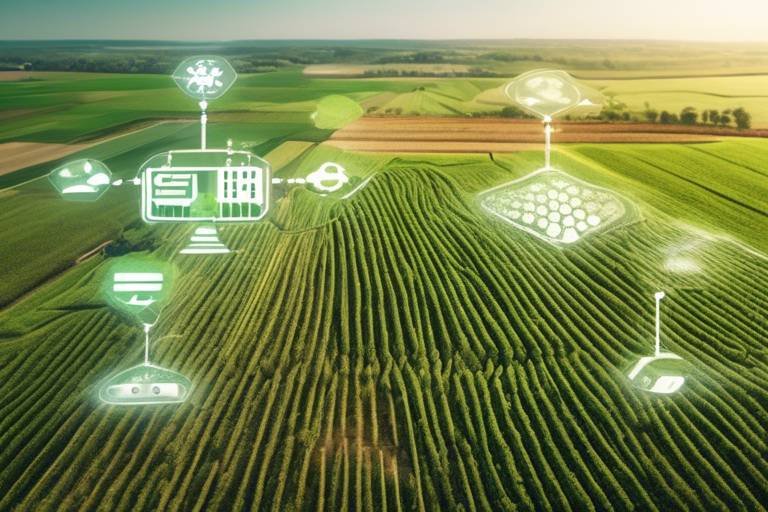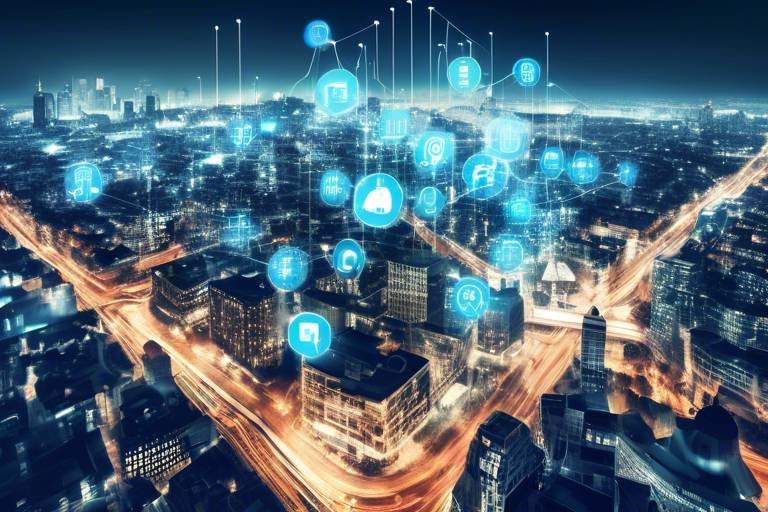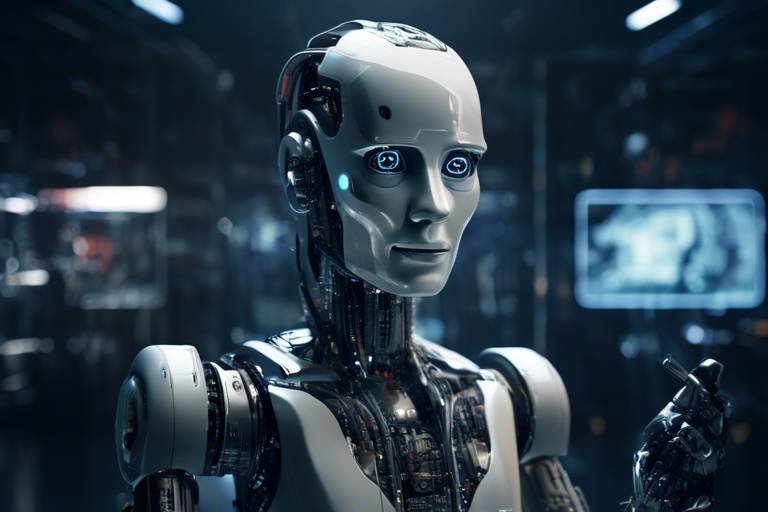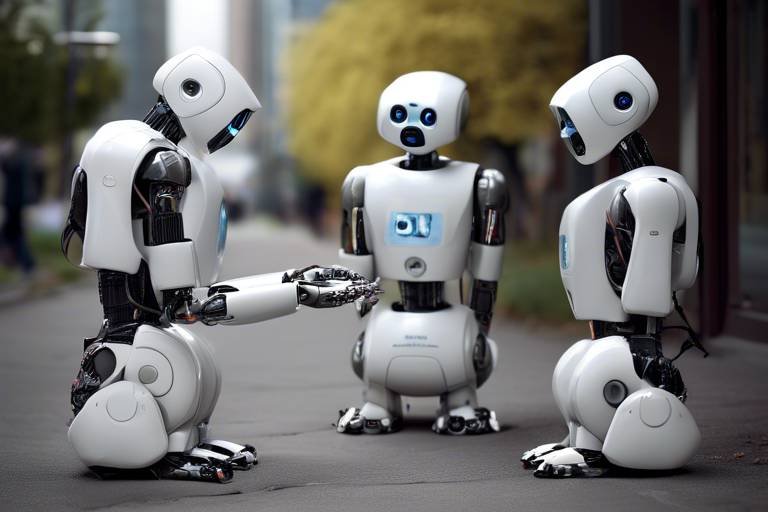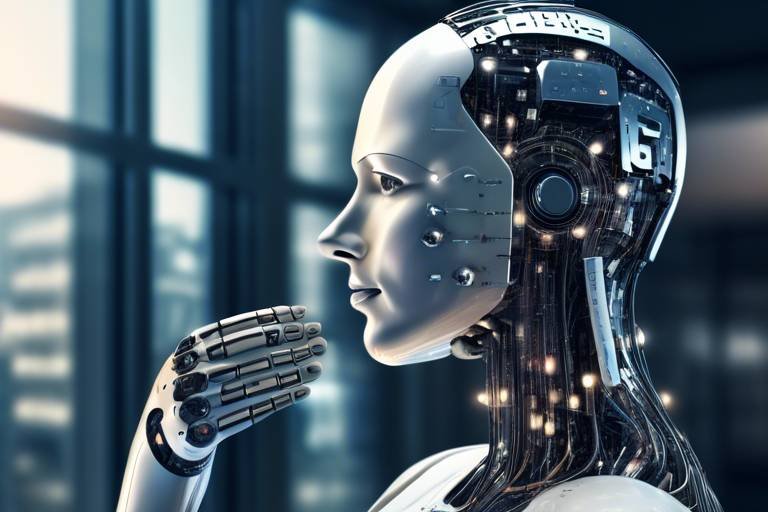3D-Printed Food: A Culinary Revolution?
The world of food is undergoing a dramatic transformation, and at the heart of this revolution lies the fascinating concept of 3D-printed food. Imagine walking into a restaurant where your meal is created right before your eyes, layer by layer, using cutting-edge technology. This isn't science fiction; it's happening now! 3D food printing is not just a novelty; it represents a significant shift in how we think about food production, presentation, and consumption. As we dive deeper into this culinary innovation, we will explore the technologies enabling this trend, the benefits it brings to both chefs and consumers, and the challenges that still lie ahead. Are you ready to discover how 3D printing could reshape our plates and our planet?
At the core of 3D food printing is a combination of advanced technologies that allow for the creation of edible products from digital designs. These printers function similarly to traditional 3D printers, but instead of plastic or metal, they use food-grade materials. The most common types of printers include extrusion-based printers, which squeeze out food pastes, and powder-based printers, which layer powdered ingredients that are then fused together. The materials used can range from pureed fruits and vegetables to proteins and carbohydrates, creating a diverse palette for culinary creativity.
So, what makes 3D-printed food so appealing? The advantages are numerous and impactful. For starters, it allows for remarkable customization. Chefs can design dishes tailored to specific dietary needs, ensuring that everyone can enjoy a meal that suits their health requirements and taste preferences. Imagine a dish that not only looks stunning but is also packed with nutrients tailored just for you!
One of the most exciting aspects of 3D food printing is the ability to create personalized meals. With this technology, chefs can adjust the nutritional profiles of dishes, catering to individual dietary restrictions or preferences. Whether it's creating gluten-free pasta or a low-sugar dessert, the possibilities are endless. This level of customization means that no one has to feel left out at the dinner table.
For those with allergies or specific health-related food requirements, 3D food printing offers a beacon of hope. Traditional food preparation often involves cross-contamination or limited choices, but with 3D printing, the risk is significantly reduced. Imagine a world where someone with a nut allergy can enjoy a delicious dessert without fear. This technology not only opens doors for inclusivity in dining but also empowers people to enjoy food without compromise.
But it's not just about health; it's also about aesthetics. 3D-printed food can be a feast for the eyes. Chefs can unleash their creativity, crafting visually stunning dishes that elevate the dining experience. Picture a plate adorned with intricate designs that look like edible art. This artistic approach not only enhances the appeal of a dish but also engages diners in a whole new way, turning meals into memorable experiences.
In addition to customization, 3D food printing offers significant environmental benefits. By reducing food waste and optimizing resource consumption, this technology presents a sustainable alternative to traditional food production methods. For instance, 3D printing can utilize food scraps and by-products that would otherwise be discarded, transforming them into delicious meals. This not only minimizes waste but also promotes a more sustainable approach to eating.
Despite its potential, 3D food printing is not without challenges. Technological limitations still pose hurdles, such as the speed and efficiency of printing processes. Furthermore, the cost of 3D printers and the materials required can be prohibitive for many consumers and businesses. Regulatory concerns also linger, as the food industry grapples with how to manage and oversee this innovative technology.
While 3D food printers are becoming more sophisticated, they still face challenges regarding their speed and efficiency. Current models may take longer to produce a meal compared to traditional cooking methods. As the technology continues to evolve, we can expect improvements that will make 3D food printing more practical for everyday use.
The financial barriers associated with acquiring 3D food printing technology can deter both consumers and businesses. The initial investment in high-quality printers and materials can be significant, making it less accessible for the average person. However, as the technology matures and becomes more widespread, we anticipate that costs will decrease, allowing more people to experience the benefits of 3D-printed food.
As we look to the future, the potential of 3D food printing seems limitless. We can expect to see more integration with traditional cooking methods, where 3D printing complements rather than replaces the culinary arts. Imagine a chef using 3D-printed components to enhance a classic dish, creating a fusion of old and new that delights the senses.
This integration could lead to exciting innovations in the culinary world, where chefs can experiment with new textures and flavors that were previously unattainable. The combination of traditional cooking techniques with modern technology could redefine what it means to dine out, pushing the boundaries of creativity and flavor.
Moreover, 3D food printing holds the potential to address global food security issues. By providing sustainable and affordable food solutions, this technology could help combat hunger and malnutrition in underserved communities. Imagine a future where nutritious meals can be printed on-demand, providing relief to those in need.
- What is 3D-printed food? - 3D-printed food refers to meals created using 3D printing technology, which builds food items layer by layer from edible materials.
- Is 3D-printed food safe to eat? - Yes, as long as food safety standards are followed, 3D-printed food can be safe and nutritious.
- What are the advantages of 3D food printing? - Some advantages include customization for dietary needs, creative presentation, and sustainability in food production.
- What challenges does 3D food printing face? - Challenges include technological limitations, costs, and regulatory concerns.
- How could 3D food printing impact the future of food? - It has the potential to enhance culinary creativity, improve food security, and promote sustainability.

The Technology Behind 3D Food Printing
The world of 3D food printing is nothing short of revolutionary, merging the realms of technology and culinary arts in ways we never thought possible. At the heart of this innovation lies a variety of cutting-edge technologies that enable chefs and food enthusiasts to create edible masterpieces. But what exactly goes into this fascinating process? Let’s dive deeper into the mechanics of 3D food printing.
To begin with, 3D food printers operate on a principle similar to traditional 3D printing, where materials are deposited layer by layer to create a final product. However, in the case of food, the materials used are quite different. The most common types of materials include pureed foods, chocolate, doughs, and even plant-based ingredients. These ingredients are often loaded into cartridges that the printer uses to extrude the food in precise shapes and designs.
The technology behind these printers can be classified into several categories, each with its unique mechanisms and capabilities. Some popular types of 3D food printers include:
- FDM (Fused Deposition Modeling): This method melts food materials and extrudes them through a nozzle to form layers.
- SLS (Selective Laser Sintering): This technique uses lasers to fuse powdered food materials, creating intricate designs.
- Binder Jetting: In this process, a liquid binder is selectively deposited onto powdered food materials to create a cohesive structure.
Each of these technologies brings its own set of advantages and challenges. For instance, while FDM printers are widely available and relatively affordable, they may not achieve the same level of detail as SLS printers, which can create highly intricate designs but come with a higher price tag. The choice of technology often depends on the desired outcome, whether it's for a simple home-cooked meal or a stunning culinary presentation at a high-end restaurant.
The materials used in 3D food printing are just as important as the printers themselves. Food scientists and technologists are continuously experimenting with various ingredients to find the perfect balance between taste, texture, and printability. For example, a successful 3D-printed chocolate must maintain its shape while being heated and melted, which requires a specific formulation. Similarly, doughs may need to be modified with additional binding agents to ensure they hold together during the printing process.
As we look to the future, the integration of AI and machine learning into 3D food printing technology holds exciting possibilities. Imagine a printer that can adjust recipes based on dietary preferences or even suggest new flavor combinations based on popular trends. This level of customization could revolutionize how we think about food, making it more accessible and personalized than ever before.
In summary, the technology behind 3D food printing is a complex and evolving field that combines various printing techniques, innovative materials, and the potential for artificial intelligence. As this technology continues to advance, we can expect to see even more creative and personalized culinary experiences emerge, changing the way we enjoy food in the years to come.

Benefits of 3D-Printed Food
In recent years, the culinary landscape has been transformed by the emergence of 3D-printed food. This innovative technology is not just a passing trend; it represents a significant shift in how we approach food preparation and consumption. One of the most exciting aspects of 3D food printing is its ability to offer a range of benefits that could revolutionize the way we eat. Imagine a world where your dinner is not only delicious but also tailored specifically to your dietary needs and preferences. Sounds intriguing, right?
One of the primary advantages of 3D-printed food is customization. Unlike traditional cooking methods, which often require compromise when it comes to ingredients, 3D food printing allows chefs and home cooks alike to create dishes that cater to individual tastes and nutritional requirements. Whether you are vegan, gluten-free, or simply have a penchant for specific flavors, 3D food printing can accommodate your needs. For instance, chefs can design meals that are not only visually appealing but also nutritionally balanced, ensuring that every bite is both satisfying and healthy.
Moreover, this technology opens the door to sustainability in food production. Traditional agriculture often leads to significant food waste, as surplus produce goes unsold or becomes inedible. With 3D food printing, ingredients can be sourced locally and used more efficiently, minimizing waste. By utilizing food materials that might otherwise be discarded, such as imperfect fruits and vegetables, we can create meals that are not only delicious but also environmentally friendly. This approach could drastically reduce the carbon footprint associated with food production and transportation.
Another noteworthy benefit is the potential for creative presentation. Imagine walking into a restaurant and being presented with a plate that looks like a work of art. With 3D food printing, chefs can explore intricate designs and shapes that elevate the dining experience. This technology allows for the creation of visually stunning dishes that can impress even the most discerning diners. The ability to mold food into various forms not only enhances aesthetic appeal but also adds an element of surprise to the meal, making dining out a truly memorable experience.
To summarize, the benefits of 3D-printed food are vast and varied. From customization and sustainability to creative presentation, this technology has the power to change our culinary experiences for the better. As we continue to explore the potential of 3D food printing, we may find ourselves on the brink of a new culinary revolution, where food is not just sustenance but an experience tailored to each individual’s desires and needs.
- What is 3D-printed food? 3D-printed food is created using a 3D printer that deposits edible materials layer by layer to form a final product.
- How does 3D food printing work? The process involves using a computer to design the food item, which is then printed using various ingredients that can include dough, chocolate, and pureed fruits or vegetables.
- What are the health benefits of 3D-printed food? 3D printing allows for precise control over ingredients, making it easier to create meals that cater to specific dietary needs and restrictions.
- Is 3D-printed food sustainable? Yes, it can be more sustainable by utilizing local ingredients and reducing food waste by repurposing surplus produce.

Customization and Personalization
In the world of culinary arts, the phrase "one size fits all" has never truly resonated. Everyone has unique tastes, preferences, and dietary needs, and that’s where 3D-printed food steps in to revolutionize the dining experience. Imagine walking into a restaurant where the menu isn't just a list of dishes but a canvas of possibilities tailored just for you. With the advent of 3D food printing technology, customization and personalization have reached unprecedented heights, allowing chefs to create meals that cater to individual nutritional profiles and aesthetic desires.
The beauty of 3D food printing lies in its ability to transform not just the ingredients but also the entire dining experience. For instance, consider a scenario where a diner with specific dietary restrictions—like gluten intolerance or a nut allergy—can enjoy a meal that is not only safe but also delicious and visually appealing. This technology harnesses the power of food inks made from various ingredients, enabling chefs to construct dishes that meet specific dietary needs without sacrificing flavor or presentation.
Furthermore, with 3D printing, the customization doesn't stop at dietary needs. It extends to the artistry of food. Chefs can create intricate designs and shapes that were previously impossible with traditional cooking methods. Imagine a dessert that looks like a delicate flower or a savory dish presented in the form of a geometric masterpiece. This level of creativity is not just about aesthetics; it enhances the overall dining experience, making it memorable and engaging for the customer.
Let's take a closer look at some key aspects of customization through 3D food printing:
- Tailored Nutritional Profiles: Chefs can adjust the ingredients used in 3D printing to create meals that are rich in specific nutrients, catering to health-conscious consumers.
- Unique Flavor Combinations: The ability to mix and match ingredients opens up a world of flavor possibilities, allowing diners to explore new culinary horizons.
- Visual Appeal: The artistic potential of 3D-printed food can turn an ordinary meal into an extraordinary visual feast, captivating diners before they even take a bite.
In essence, the customization and personalization offered by 3D food printing not only enhance the dining experience but also empower consumers to make choices that align with their health and aesthetic preferences. As this technology continues to evolve, it will undoubtedly pave the way for a more inclusive and imaginative culinary landscape, where every meal is a unique expression of individual tastes and needs.

Dietary Restrictions
When it comes to food, one size definitely does not fit all. Many individuals face due to allergies, intolerances, or specific health conditions. Imagine a world where your food is not only delicious but also tailored to meet your unique needs! That's where 3D food printing comes into play, offering a revolutionary solution to these challenges. With the ability to customize ingredients and nutritional profiles, 3D food printing can create meals that cater to specific dietary requirements, ensuring that everyone can enjoy their food without worry.
For instance, consider those with gluten intolerance. Traditional cooking methods often make it difficult to create satisfying meals that are completely free of gluten. However, with 3D food printing technology, chefs can design gluten-free dishes that are both safe and scrumptious. The printer can use alternative flours, such as almond or coconut, to produce items that not only meet dietary needs but also taste amazing. This customization opens up a whole new realm of possibilities for people with dietary restrictions.
Moreover, individuals with allergies can benefit significantly from 3D-printed food. By precisely controlling the ingredients used, chefs can eliminate allergens while still creating visually appealing and flavorful dishes. For example, a person allergic to nuts can enjoy a beautifully crafted dessert that looks just as enticing as its nutty counterpart, without the risk of triggering an allergic reaction. This level of control and customization is a game-changer in the culinary world.
In addition to allergies and intolerances, 3D food printing can also cater to specific health-related food requirements. For example, individuals with diabetes often need to monitor their carbohydrate intake. With the help of 3D printing technology, chefs can create meals with precise macronutrient profiles, providing tasty options that align with dietary guidelines. This not only helps individuals manage their health but also empowers them to enjoy a diverse range of foods.
As we embrace this technology, we can also consider the artistic aspect of food. 3D food printing allows chefs to create stunning designs that enhance the dining experience, making meals not only a feast for the taste buds but also for the eyes. Imagine a dish that’s not only healthy and tailored to your needs but also looks like a work of art on your plate. This fusion of health and aesthetics is what makes 3D-printed food truly revolutionary.
In conclusion, the potential of 3D food printing to address dietary restrictions is immense. By allowing for customization, it opens doors for individuals who have previously felt limited by their dietary needs. The future of food is not just about feeding the body; it’s about nourishing the soul, and 3D printing is paving the way for a more inclusive culinary landscape.
- What is 3D-printed food? 3D-printed food is created using food printers that layer ingredients to form edible products, allowing for customization and creativity in food preparation.
- How can 3D food printing help with dietary restrictions? It allows for precise control over ingredients, enabling the creation of meals tailored to individual dietary needs, such as gluten-free, nut-free, or low-carb options.
- Is 3D-printed food safe to eat? Yes, as long as the ingredients used are safe and suitable for consumption, 3D-printed food is generally considered safe.
- Can 3D food printing reduce food waste? Yes, it can optimize ingredient use by allowing for precise measurements and creating only what is needed, thus reducing overall waste.

Creative Presentation
When it comes to dining, we all know that we eat with our eyes first. The art of presentation can elevate a meal from mundane to extraordinary, and 3D-printed food is leading the charge in this culinary revolution. Imagine sitting down to a plate where every element has been crafted with precision, each layer meticulously designed to not only taste good but also to look stunning. With 3D food printing, chefs can unleash their creativity in ways that were previously unimaginable.
One of the most exciting aspects of 3D food printing is the ability to create intricate shapes and designs that can transform a simple dish into a work of art. Think about it: a dessert that resembles a delicate flower, or a savory dish that mimics the appearance of a vibrant landscape. This technology allows chefs to experiment with textures, colors, and forms, making the dining experience not just a meal but a visual feast. The possibilities are endless, and the only limit is the chef's imagination.
For instance, consider how a 3D printer can layer ingredients to create a dish that looks like a piece of modern art. Each layer can be a different flavor or texture, creating a harmonious blend that surprises the palate. This is particularly appealing in high-end dining establishments where presentation is key to the overall experience. Chefs can now design plates that not only taste incredible but also tell a story through their artistic presentation.
Moreover, 3D printing allows for personalization in presentation. Imagine a birthday cake printed with the exact design requested by the birthday person, or a dish shaped to reflect a theme for a special event. This level of customization can make occasions feel even more special, as guests are treated to a unique culinary creation that resonates with them personally.
As 3D food printing technology continues to evolve, we can expect to see even more innovative designs making their way onto our plates. For chefs, this means the opportunity to push boundaries and redefine what we consider food. It’s not just about filling our stomachs anymore; it’s about creating an experience that engages all the senses. The intersection of technology and culinary arts is paving the way for a future where every meal can be a masterpiece.
In summary, 3D-printed food is revolutionizing the way we think about presentation in the culinary world. It combines artistry and technology to create visually stunning dishes that enhance the dining experience. As this technology becomes more accessible, we can look forward to a future where every meal is not just a necessity but a celebration of creativity.
- What is 3D-printed food? 3D-printed food refers to food items created using 3D printing technology, where ingredients are extruded layer by layer to form various shapes and designs.
- How does 3D food printing work? A 3D food printer uses a computer-controlled process to deposit food materials in precise patterns, allowing for intricate designs and customized creations.
- What are the benefits of 3D-printed food? Benefits include customization, sustainability, and the ability to create visually stunning dishes.
- Are there any challenges with 3D food printing? Yes, challenges include technological limitations, cost factors, and regulatory concerns.
- What does the future hold for 3D-printed food? The future may involve further integration with traditional cooking methods and addressing global food security issues.

Sustainability in Food Production
In an era where our planet's resources are being stretched to their limits, sustainability in food production has become a hot topic. The advent of 3D food printing offers a promising solution to some of the most pressing environmental challenges we face today. Imagine a world where food is not only delicious but also produced with minimal waste and reduced environmental impact. That's the vision that 3D food printing brings to the table.
One of the most significant advantages of 3D food printing is its ability to utilize local ingredients. Instead of relying on mass production and long supply chains that contribute to carbon emissions, 3D food printers can create meals using locally sourced materials. This not only supports local farmers but also reduces the overall carbon footprint associated with transporting food. In essence, it’s like having a mini-farm in your kitchen!
Moreover, 3D food printing can drastically reduce food waste. Traditional food production often results in a significant amount of leftover scraps and unusable parts. However, with 3D printing, chefs can design meals that maximize every bit of the ingredient. For example, vegetable scraps that would typically be discarded can be blended into a paste and used as a base for new dishes. This innovative approach not only makes the most of our resources but also encourages a culture of zero waste.
To illustrate the impact of 3D food printing on sustainability, consider the following table:
| Traditional Food Production | 3D Food Printing |
|---|---|
| High food waste due to excess production | Minimal waste through precise ingredient usage |
| Long supply chains contribute to carbon emissions | Utilizes local ingredients, reducing transport emissions |
| Standardized products with limited customization | Highly customizable meals tailored to individual needs |
By embracing 3D food printing, we can not only enhance our culinary experiences but also contribute to a more sustainable food system. This technology allows us to rethink how we produce, consume, and waste food. As we move forward, it’s essential for chefs, consumers, and businesses alike to recognize the potential of this revolutionary approach. The future of food is not just about what we eat, but how we produce it sustainably.
In conclusion, the integration of 3D food printing into our culinary practices could be a game-changer for sustainability in food production. By reducing waste, utilizing local ingredients, and offering customization, we can pave the way for a more environmentally friendly food system. So, the next time you think about your meal, consider how 3D printing might just be the secret ingredient for a sustainable future!
- What is 3D food printing? 3D food printing is a technology that creates food items layer by layer using edible materials, allowing for intricate designs and customization.
- How does 3D food printing contribute to sustainability? It reduces food waste, utilizes local ingredients, and minimizes the carbon footprint associated with traditional food production methods.
- Can 3D food printing cater to dietary restrictions? Yes, it allows for tailored nutritional profiles and designs, making it easier to accommodate various dietary needs.
- What are some challenges of 3D food printing? Current challenges include technological limitations, cost factors, and regulatory concerns regarding food safety.

Challenges Facing 3D Food Printing
While the world of 3D food printing is undeniably exciting, it doesn't come without its fair share of challenges. Imagine a new technology that promises to revolutionize our culinary landscape, yet still grapples with issues that could impede its widespread adoption. The hurdles can be broadly categorized into three main areas: technological limitations, cost and accessibility, and regulatory concerns.
First, let's dive into the technological limitations. Currently, the speed and efficiency of 3D food printers are not yet on par with traditional cooking methods. Most printers can only produce food at a relatively slow pace, which can be a significant drawback in a fast-paced restaurant environment. Imagine waiting for your food to be printed when you're starving! Moreover, the variety of edible materials that can be used in these printers is still limited. While some printers can work with pureed foods or chocolate, the range of textures and flavors that can be achieved is nowhere near what traditional chefs can conjure up. Advancements in technology are crucial here, as they could lead to printers that can handle a wider variety of ingredients and produce food more quickly.
Next up is the issue of cost and accessibility. Currently, the price tag for high-quality 3D food printers can be astronomical, making them largely out of reach for the average consumer. For restaurants and food businesses, investing in this technology can mean a significant upfront cost, not to mention the ongoing expenses related to maintenance and ingredients. As a result, many small businesses may find it challenging to justify the expense, especially when traditional cooking methods are still effective and less costly. However, as the technology matures and more manufacturers enter the market, we might see a decrease in prices, making 3D food printing more accessible to a broader audience.
Finally, we cannot overlook the regulatory concerns surrounding 3D-printed food. As with any new technology, food safety is a paramount concern. Regulatory bodies need to establish guidelines and standards to ensure that 3D-printed foods are safe for consumption. This includes everything from ingredient sourcing to the hygiene of the printing process itself. The uncertainty surrounding these regulations can create hesitation among businesses looking to adopt this technology, as they may fear the risk of non-compliance or potential backlash from consumers wary of new food production methods.
In summary, while the potential of 3D food printing is vast, it faces challenges that must be addressed before it can become a staple in kitchens worldwide. Overcoming technological limitations, reducing costs, and establishing clear regulatory guidelines will be essential steps in paving the way for a culinary revolution. As we continue to explore this innovative frontier, the future of food could be as dynamic and varied as the ingredients we choose to print!
- What are the main challenges of 3D food printing? The main challenges include technological limitations, high costs, and regulatory concerns.
- How does technology impact the quality of 3D-printed food? Current technology limits the variety of ingredients and the speed of production, affecting the overall quality and dining experience.
- Is 3D food printing accessible to average consumers? Currently, high costs make 3D food printing more accessible to businesses than to individual consumers.
- What regulations exist for 3D-printed food? Regulatory bodies are still developing guidelines to ensure the safety and compliance of 3D-printed food products.

Technological Limitations
Despite the exciting prospects of 3D food printing, we must acknowledge the that currently hinder its widespread adoption. One of the primary challenges is the speed and efficiency of 3D printers. Traditional cooking methods can produce meals in a matter of minutes, while 3D printing can take significantly longer, often requiring hours to create a single dish. This time-consuming process can be a major drawback, especially in fast-paced culinary environments such as restaurants or catering services.
Moreover, the variety of materials that can be used in food printing is still somewhat limited. Most 3D food printers primarily utilize pastes and gels, which can restrict the types of foods that can be created. For example, while you might enjoy a beautifully printed chocolate dessert, the same technology may struggle to replicate the textures and flavors of a hearty stew or a delicate soufflé. This limitation can stifle culinary creativity, as chefs may find themselves constrained by the available materials.
Another significant hurdle is the complexity of printer technology. Many 3D food printers require a steep learning curve, making it challenging for chefs and home cooks alike to master the equipment. The setup and maintenance of these machines can also be cumbersome, leading to frustration and potential downtime. As with any emerging technology, there’s a need for user-friendly interfaces and better training resources to help users harness the full potential of 3D food printing.
Additionally, the cost of 3D food printers can be prohibitive for many individuals and businesses. High-quality printers that can produce consistent and reliable results often come with a hefty price tag, making them less accessible to smaller establishments or home cooks. This financial barrier can limit innovation and experimentation in the culinary field, as not everyone can afford to invest in this technology.
Finally, regulatory concerns also pose a challenge. The food industry is heavily regulated, and introducing new technologies like 3D food printing raises questions about safety, labeling, and compliance. As the technology evolves, it will be crucial to establish clear guidelines and standards to ensure that 3D-printed foods are safe for consumption. Until these regulations are in place, the growth of 3D food printing may be stifled by uncertainty and hesitation from both consumers and producers.
In conclusion, while the potential of 3D food printing is undeniable, overcoming these technological limitations will be essential for it to realize its full impact on the culinary world. As advancements continue and the industry adapts, we may soon see a future where 3D-printed food becomes a staple in kitchens around the globe.
- What is 3D food printing?
3D food printing is a process that uses additive manufacturing technology to create edible products layer by layer, allowing for intricate designs and customized nutritional profiles.
- What materials can be used in 3D food printing?
Common materials include pastes, gels, and purees, often derived from ingredients like chocolate, dough, and fruit puree.
- Are 3D-printed foods safe to eat?
Yes, 3D-printed foods can be safe to eat, but it's essential for manufacturers to follow food safety regulations and guidelines.
- How long does it take to print food?
The time required can vary significantly based on the complexity of the design and the type of printer used, ranging from minutes to several hours.
- Can 3D food printing help with food waste?
Yes, by allowing for precise ingredient usage and customization, 3D food printing has the potential to reduce food waste in the culinary industry.

Cost and Accessibility
The journey into the world of 3D-printed food is as exciting as it is complex, particularly when we consider the issues of cost and accessibility. While the technology behind 3D food printing holds immense potential, it also comes with a hefty price tag that can be a significant barrier for many. Imagine wanting to create your own personalized pizza, but the printer costs as much as a small car! This is the reality for many aspiring chefs and food enthusiasts who dream of bringing this innovation into their kitchens.
Currently, the cost of 3D food printers can range from a few thousand to tens of thousands of dollars, depending on the model and features. This steep investment is not just for the printer itself; you also need to consider the cost of the materials used to print the food. These materials often come in specialized cartridges, which can be quite pricey. For instance, a standard cartridge for a 3D food printer can cost anywhere from $50 to $200, depending on the ingredients and formulation. This can make regular use of a 3D printer economically unfeasible for the average home cook.
Moreover, accessibility isn't just about the price tag; it's also about the availability of these printers and materials. In many regions, especially in developing countries, access to advanced cooking technology is limited. This means that while urban areas might see a surge in 3D food printing innovation, rural communities may be left behind, missing out on the benefits of customization and sustainability that this technology can offer. Imagine a world where only those in affluent neighborhoods can enjoy customized meals while others are stuck with traditional, less personalized options.
To illustrate the disparity in access, consider the following table that compares the costs and availability of 3D food printing technology across different regions:
| Region | Average Cost of Printer | Material Cost per Cartridge | Accessibility Level |
|---|---|---|---|
| North America | $5,000 - $15,000 | $50 - $200 | High |
| Europe | $4,000 - $12,000 | $40 - $180 | Medium |
| Asia | $3,000 - $10,000 | $30 - $150 | Medium to Low |
| Africa | $2,000 - $8,000 | $20 - $100 | Low |
As we can see, the cost and accessibility of 3D food printing vary significantly across different regions. This creates a scenario where the culinary revolution promised by 3D printing may not be equally experienced by everyone. The question then arises: how can we make this technology more affordable and accessible to a wider audience?
One potential solution could be the development of community kitchens equipped with 3D food printers, allowing individuals to access the technology without the burden of ownership costs. This could democratize the experience of 3D food printing and make it a reality for many who would otherwise be excluded. Additionally, as technology advances and becomes more mainstream, we can expect prices to drop, making 3D food printing more accessible to the general public.
In conclusion, while the of 3D-printed food present significant challenges, they also offer exciting opportunities for innovation and community engagement. As we navigate this culinary revolution, it’s essential to consider how we can bridge the gap between technology and accessibility, ensuring that everyone can enjoy the benefits of personalized and sustainable food solutions.
- What is 3D food printing? - It's a technology that creates food by layering ingredients according to a digital design.
- How much does a 3D food printer cost? - Prices can range from a few thousand to tens of thousands of dollars.
- Can 3D food printing reduce food waste? - Yes, it can optimize ingredient use and create meals tailored to individual needs.
- Are 3D-printed foods safe to eat? - Yes, as long as food-safe materials and ingredients are used.

Future of 3D-Printed Food
The future of 3D-printed food is not just a fleeting trend; it’s a revolution waiting to unfold in the culinary world. Imagine walking into a restaurant where the menu is entirely customizable, where your dish can be tailored to your specific tastes and dietary needs, all thanks to the magic of 3D printing technology. This isn’t science fiction; it’s becoming a reality. As we look ahead, the integration of 3D food printing with traditional cooking methods could create a harmonious blend of creativity and efficiency. Chefs could use 3D-printed elements to enhance their dishes, adding intricate designs that were once thought impossible.
Moreover, the potential for global impact on food security cannot be overstated. With the ability to produce food on-demand and reduce waste, 3D food printing could be a game-changer in addressing hunger and food scarcity issues worldwide. Imagine a scenario where local communities can print nutritious meals using locally sourced ingredients, drastically cutting down on transportation costs and carbon footprints. This technology could pave the way for sustainable food production, making it easier for people to access affordable and healthy food options.
As we dive deeper into the future, several trends are likely to emerge in the 3D food printing landscape:
- Integration with Nutritional Science: Future advancements may allow for the printing of food that meets specific nutritional requirements, making it easier for people to maintain healthy diets.
- Enhanced Flavor Profiles: 3D printing technology could enable the combination of flavors in ways we’ve never experienced before, leading to innovative culinary creations.
- Wider Accessibility: As technology advances and costs decrease, we may see 3D food printers becoming more commonplace in homes and restaurants alike.
However, it’s essential to recognize that the journey towards widespread adoption of 3D-printed food is filled with challenges. The technology must overcome limitations in speed and efficiency, ensuring that the final product not only looks appealing but also tastes great. Additionally, as we embrace this new culinary frontier, regulatory frameworks will need to adapt to ensure food safety and quality standards are met.
In conclusion, the future of 3D-printed food holds immense potential. It could redefine the way we think about food production, sustainability, and culinary creativity. With ongoing advancements and a growing interest in this innovative technology, we are on the brink of a culinary revolution that may forever change our dining experiences.
- What is 3D-printed food? 3D-printed food refers to food items created using 3D printing technology, which layers ingredients to form edible products.
- How does 3D food printing work? It works by using specialized printers that extrude food materials layer by layer, allowing for intricate designs and customization.
- Is 3D-printed food safe to eat? Yes, as long as the materials used are food-grade and the printing process follows safety standards.
- Can 3D food printing reduce food waste? Absolutely! By producing food on-demand and using only the necessary ingredients, 3D printing can significantly minimize waste.

Integration with Traditional Cooking
As we stand on the brink of a culinary revolution, the integration of 3D-printed food with traditional cooking methods presents an exciting frontier. Imagine a world where the artistry of a seasoned chef meets the precision of a 3D printer, creating dishes that are not only delicious but also visually stunning. This synergy can enhance both the taste and presentation of meals, transforming the dining experience into something extraordinary.
One of the most fascinating aspects of this integration is how chefs can use 3D printing to complement their traditional skills. For instance, a chef might prepare a classic dish, such as a rich beef bourguignon, but elevate it by using 3D printing technology to create intricate garnishes or unique pasta shapes that would be nearly impossible to achieve by hand. This not only adds a layer of creativity but also allows chefs to push the boundaries of their culinary art.
Moreover, the use of 3D printing can streamline certain processes in the kitchen, making it easier to produce consistent results. For example, chefs can pre-print components like sauces or decorative elements, which can then be combined with freshly cooked items. This not only saves time during busy service hours but also ensures that each plate looks perfect, every single time. The ability to customize shapes and flavors can lead to more innovative dishes that surprise and delight diners.
However, it’s essential to recognize that while 3D printing offers exciting possibilities, it does not replace the fundamental skills of cooking. Instead, it acts as a tool that enhances traditional methods. Just as a blender or sous-vide machine revolutionized cooking, 3D printing can be seen as the next step in culinary evolution. Chefs can experiment with new textures and flavors, creating dishes that are not just meals but also works of art.
In this evolving landscape, the culinary community is likely to see a shift in how chefs are trained. Future culinary schools may incorporate 3D food printing technology into their curriculums, teaching aspiring chefs how to blend traditional techniques with modern innovations. This fusion of old and new could lead to a new generation of chefs who are not only skilled in the kitchen but also adept at using technology to enhance their craft.
Ultimately, the integration of 3D-printed food with traditional cooking is more than just a trend; it’s a glimpse into the future of gastronomy. As we embrace this technology, we pave the way for culinary creativity that knows no bounds. The potential is vast, and the possibilities are tantalizing. Will you be among the first to experience this flavorful fusion?
- What is 3D food printing?
3D food printing is a process that uses additive manufacturing technology to create edible products layer by layer, allowing for intricate designs and customized shapes.
- How does 3D printing enhance traditional cooking?
It allows chefs to create unique garnishes, streamline food preparation, and experiment with new textures and flavors, thus elevating the overall dining experience.
- Can 3D food printing be used in home kitchens?
Yes, there are consumer-grade 3D food printers available that can be used in home kitchens, making it accessible for enthusiasts to experiment with this technology.
- What are the benefits of combining 3D printing with cooking?
The benefits include enhanced creativity, the ability to customize dishes, improved presentation, and potential time savings in food preparation.

Global Impact on Food Security
As we navigate through the complexities of food security in an ever-growing global population, the emergence of 3D-printed food technology presents a beacon of hope. Imagine a world where food is not only produced sustainably but also tailored to meet the nutritional needs of every individual, regardless of their location. 3D food printing has the potential to revolutionize the way we think about food production and distribution, addressing pressing issues such as hunger, malnutrition, and food waste.
One of the most significant advantages of 3D food printing is its ability to create meals using locally sourced ingredients. This means that communities can utilize what is available in their environment, reducing transportation costs and carbon footprints. By leveraging local resources, we can significantly diminish the reliance on mass-produced food systems that often contribute to environmental degradation. Additionally, this localized approach can help stimulate local economies, creating jobs and fostering community resilience.
Moreover, 3D food printing can play a pivotal role in combating food waste. According to the Food and Agriculture Organization (FAO), approximately one-third of all food produced globally is wasted. With 3D printing, leftover ingredients can be repurposed into new meals, effectively minimizing waste. This not only optimizes resource use but also ensures that food is utilized to its fullest potential, contributing to a more sustainable food system.
Furthermore, the customization capabilities of 3D food printing can address nutritional deficiencies prevalent in many regions. For instance, in areas where certain vitamins and minerals are lacking in the local diet, 3D printing technology can be employed to create foods fortified with essential nutrients. This tailored approach could significantly improve public health and combat malnutrition, particularly in vulnerable populations.
To illustrate the potential impact of 3D food printing on food security, consider the following table:
| Impact Area | Potential Benefits |
|---|---|
| Local Sourcing | Reduces transportation costs and carbon emissions |
| Waste Reduction | Transforms leftovers into new meals, minimizing food waste |
| Nutritional Customization | Addresses specific dietary needs and deficiencies |
| Economic Support | Stimulates local economies by creating jobs in food production |
In conclusion, the integration of 3D-printed food technology into our food systems could profoundly impact global food security. By harnessing the power of local resources, reducing waste, and addressing nutritional needs, we can pave the way for a more sustainable and equitable food future. As we continue to explore the possibilities of this innovative technology, the culinary landscape may very well transform into one that not only feeds the world but does so in a way that respects our planet and its inhabitants.
- What is 3D-printed food?
3D-printed food refers to food items created using 3D printing technology, which layers ingredients to form edible products.
- How does 3D food printing help with food security?
It promotes local sourcing, reduces waste, and allows for nutritional customization, making food production more sustainable.
- Are there any challenges to adopting 3D food printing?
Yes, challenges include technological limitations, costs, and regulatory concerns that need to be addressed for widespread adoption.
Frequently Asked Questions
- What is 3D-printed food?
3D-printed food is a revolutionary culinary innovation that utilizes advanced printing technology to create edible products layer by layer. It combines food science with engineering, allowing chefs and food enthusiasts to design and produce unique food items that can be customized based on nutritional needs and artistic preferences.
- How does 3D food printing work?
The process involves using a 3D printer specifically designed for food, which extrudes food materials through a nozzle. These materials can include pureed fruits, vegetables, and other edible ingredients. The printer follows a digital model to build the food item, creating intricate shapes and designs that would be difficult to achieve through traditional cooking methods.
- What are the benefits of 3D-printed food?
There are several benefits to 3D-printed food, such as:
- Customization: Tailor meals to individual dietary preferences and needs.
- Sustainability: Reduce food waste and utilize local ingredients.
- Creative Presentation: Create visually stunning dishes that enhance the dining experience.
- Can 3D food printing address dietary restrictions?
Absolutely! 3D food printing can cater to various dietary restrictions by allowing for the precise formulation of ingredients. This means that individuals with allergies or specific health-related dietary needs can enjoy meals that are safe and tailored to their requirements.
- What challenges does 3D food printing face?
While the technology is promising, it faces several challenges, including:
- Technological Limitations: Issues with speed and efficiency in production.
- Cost and Accessibility: High initial costs for printers and ingredients can limit widespread adoption.
- Regulatory Concerns: Navigating food safety regulations can be complex.
- What does the future hold for 3D-printed food?
The future of 3D-printed food looks bright! We can expect to see more integration with traditional cooking methods, allowing for enhanced culinary creativity. Additionally, this technology has the potential to address global food security issues by providing sustainable, affordable food solutions for communities around the world.


